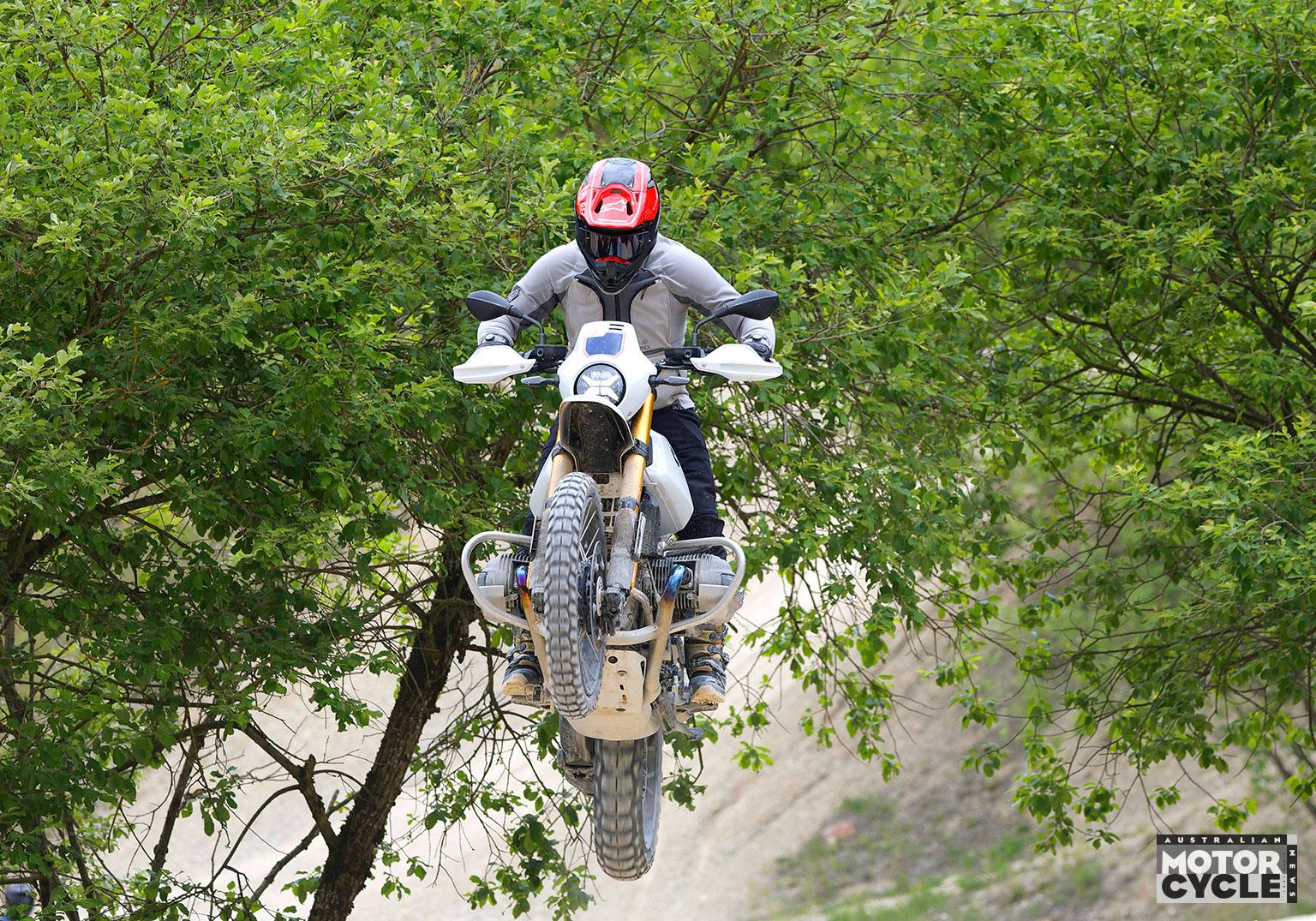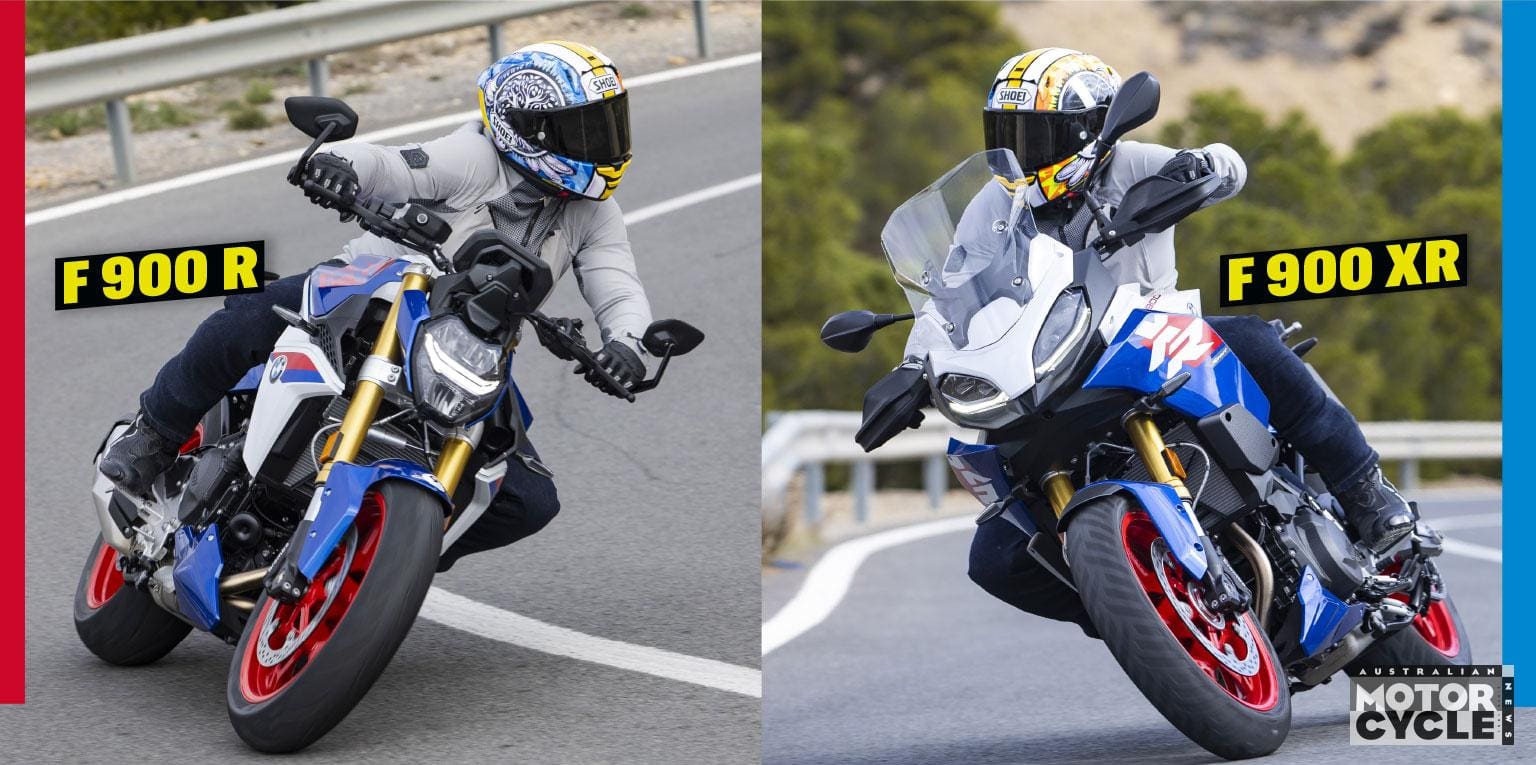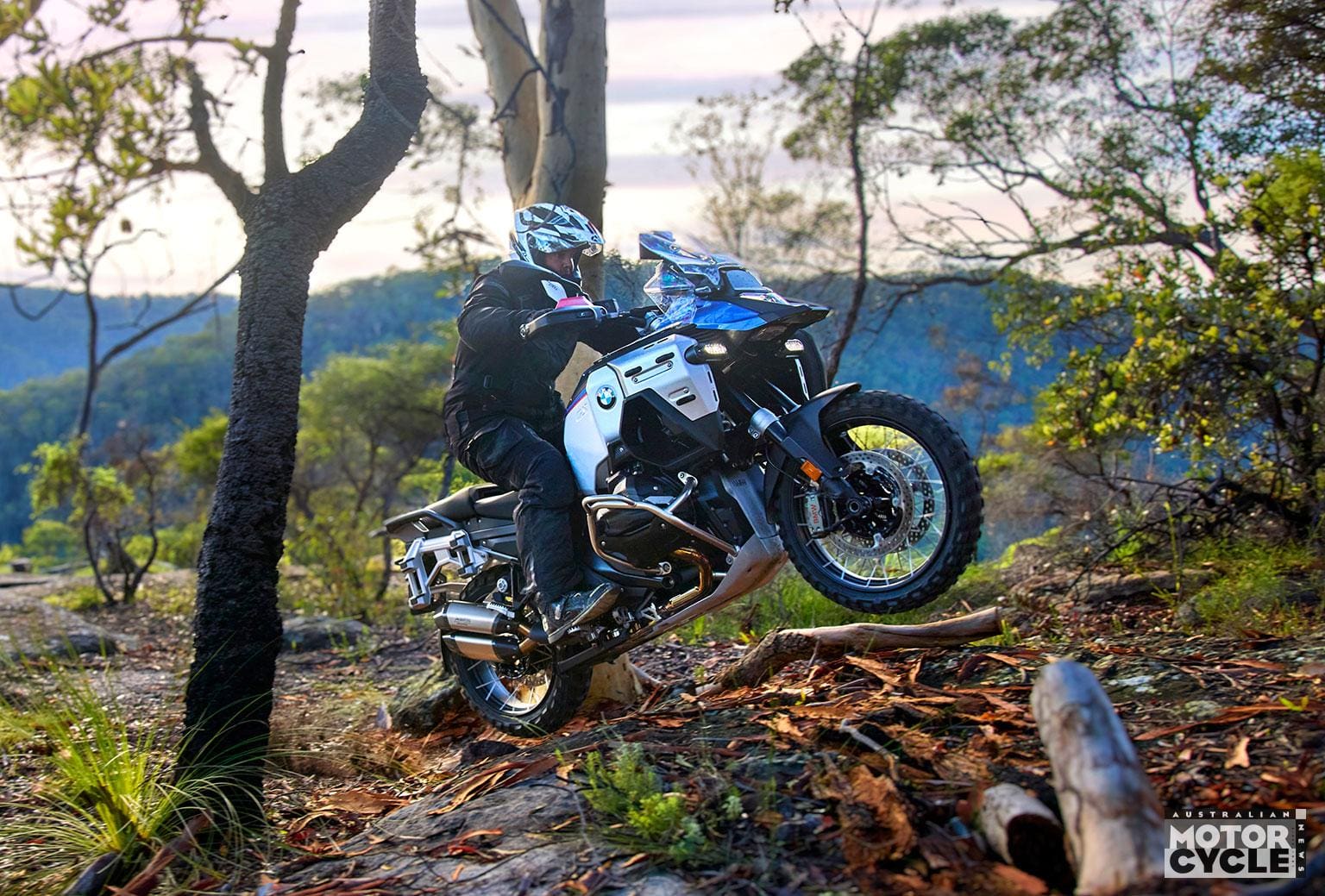Like it or not, the progress being made by Chinese motorcycle brands in the 2020s has all the hallmarks of the beginning of the Japanese motorcycle industry’s rise to supremacy in the 1970s. Because like it or not, there’s some high-quality machinery coming out of China these days and their high-value proposition is doing a convincing job of shrugging off any negative overtones. Take this pair of retro scramblers, for example, with their midsize capacity, high-quality finish, decent level of tech and the fact they’re both backed by a three-year warranty. Four things you couldn’t say about a Chinese motorcycle not that many years ago.

On paper, the Benelli Leoncino 800 Trail and CFMoto 700 CL-X Adventure are pretty similar.What the CFMoto lacks in cubes, it more than makes up for in tech appointments. And while the scrambler theme is a laid-back take on the adventure genre, a head-to-head comparison test provided the perfect excuse to grab my riding mate Andy ‘Strapz’ White, and head bush for a night under the stars via the twisty tarmac and spectacular scenery of Victoria’s South Gippsland.
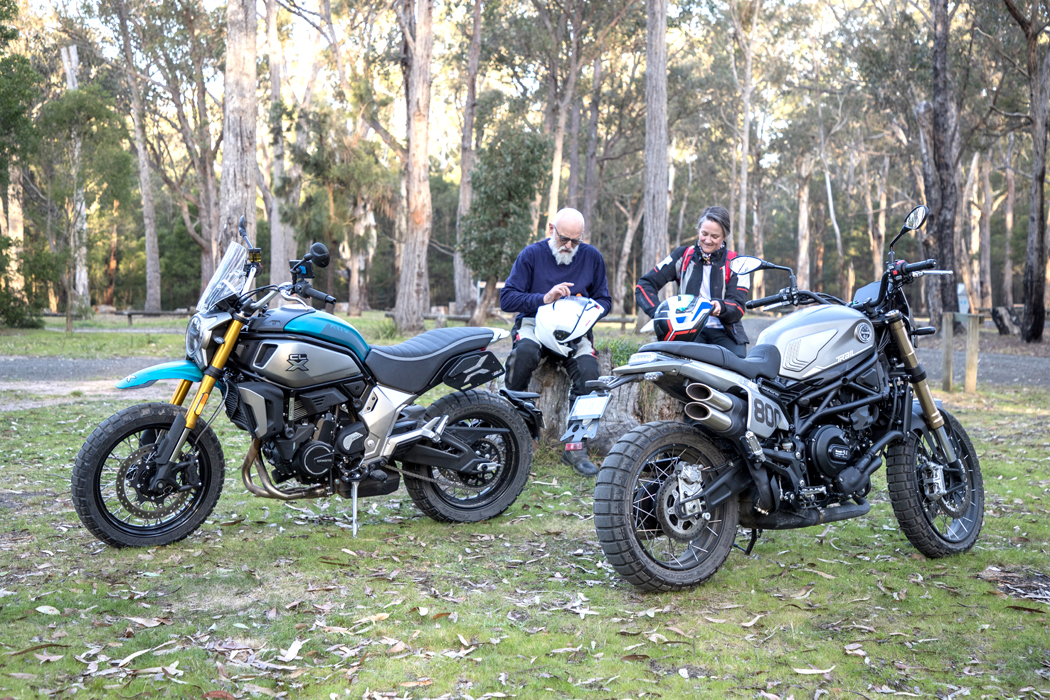
The engine room
The on-paper story tells a very different narrative to how the two engines perform in the real world. According to the specs sheet, despite having 61cc fewer cubes, the CFMoto’s 693cc 55kW, 68Nm parallel twin is more or less on par, making more torque (+1Nm) and just one kilowatt less power than the Benelli’s 754cc parallel twin. From that you could deduce the CFMoto would feel more refined, that it might have better fueling and just feel more responsive overall.

However despite those numbers, the Benelli’s engine has loads more character than the CFMoto’s. It feels more ‘lumpy’ and therefore more torquey. Essentially a twin-cylinder version of the firm’s old 1131cc inline three-cylinder engine, the Benelli’s cylinders have the same 88 x 62mm dimensions as the TNT 1130R.

The clutch lets it down, however. It’s both heavy and grabby and had both of us stalling far more frequently than our combined experience should allow.
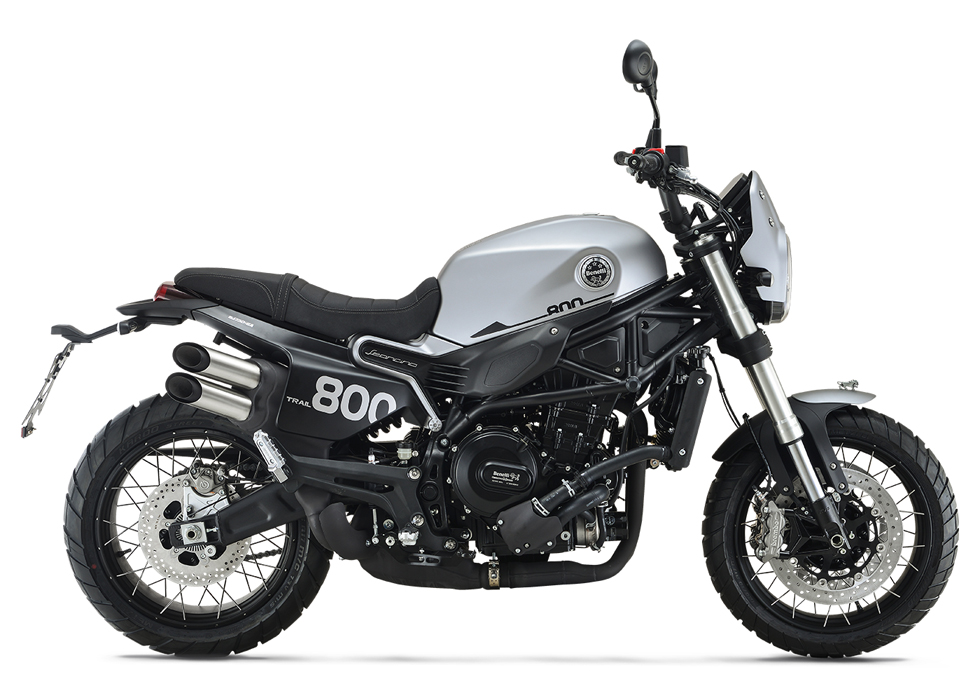
The CFMoto’s 693cc is still a great engine, it’s just not as engaging as the Benelli’s. It has a really usable spread of performance, and it’s really happy to rev, too. But while the fueling off the bottom and in the lower reaches of the rev range is nigh-on perfect, it will surge on a constant throttle at highway speeds and it also has this really strange burst of acceleration right at the very top of the rev range, but not in a good way.

Given this is the third bike this engine’s been used in since its late-2019 unveiling, any fueling issues probably should have been sorted out by now. And speaking of fuel and issues, the CFMoto’s 13-litre tank is a bit of a joke on a bike with Adventure in its moniker and, to make things worse, its low fuel warning chimes in prematurely. The Benelli’s tank is larger at 15 litres, but it’s thirstier too. On the trip the Benelli averaged 6.3L/100km compared to the CFMoto’s 5.4L/100km consumption figure.
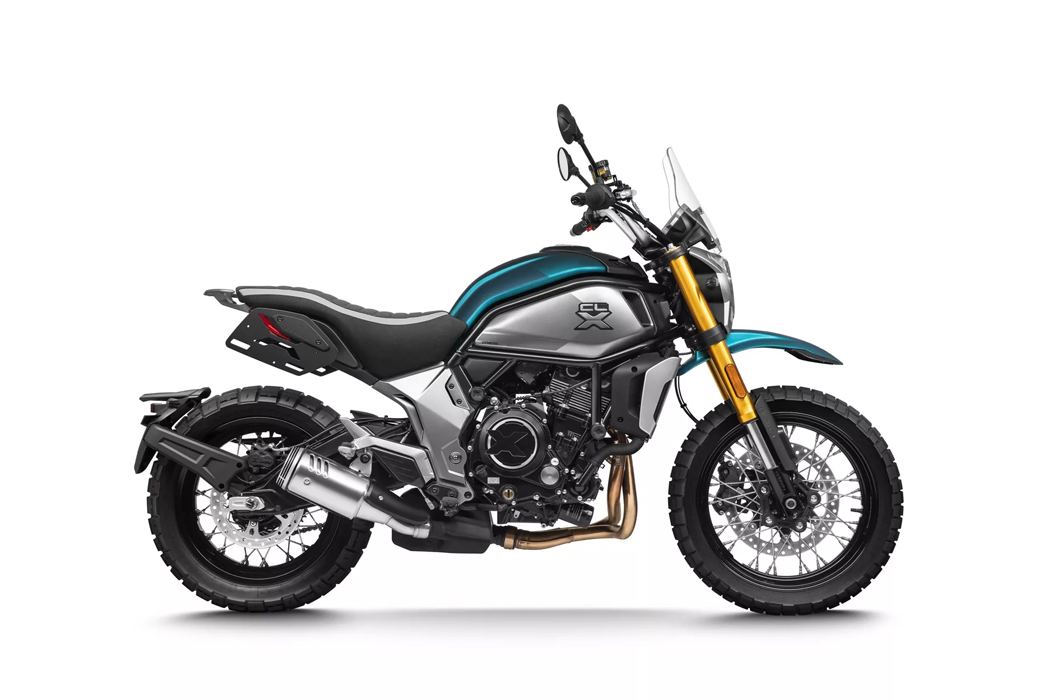
Suspension and handling
Ridden on its own, there’s nothing wrong with the QJ-made 50mm non-adjustable upside-down fork of the Benelli. There’s oodles of feedback coming through to the rider, despite the 19-inch front wheel and the 140mm of travel, and the base settings seem pretty well sorted. But then you jump on the CFMoto and feel the increased compliance of the KYB 41mm fork, which is adjustable for both compression and preload, and all of a sudden you realise the Benelli is over-suspended and underdamped. The Benelli, which is 30kg heavier than the CFMoto, is a lot more rigid and far less plush than the CFMoto in the front-end.
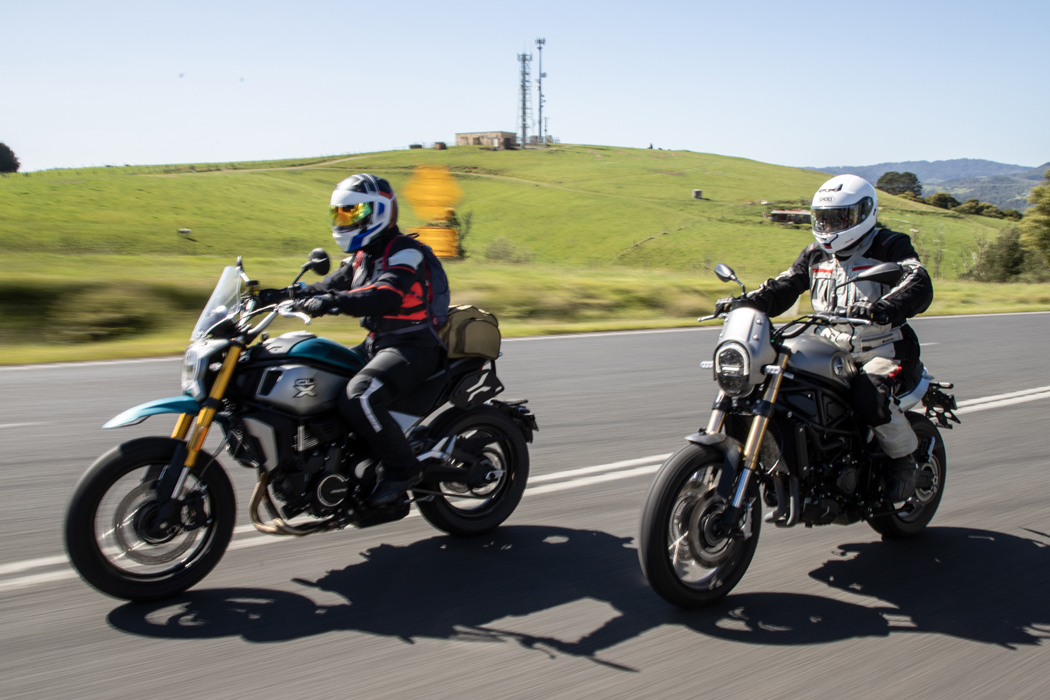
It was a similar but less pronounced story at the rear. The Benelli’s monoshock, made in-house at QJ, is adjustable for rebound and preload just like the CFMoto’s KYB affair.
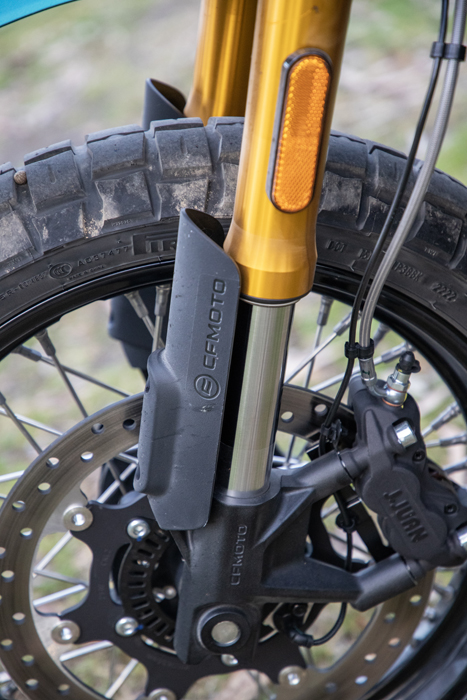
I found the Benelli’s rear to again be a little harsh for my 64kg frame, though not to the point of jarring and not enough to tweak the settings. Besides, the roads in South Gippsland are pretty well maintained, and what would have suited me wouldn’t have suited Andy, so we left it on the setting it was supplied with.

The increased compliance of the CFMoto made it my pick of the two bikes in the really twisty stuff. Its lower weight and 18-inch front wheel (compared to a 19-incher on the Benelli) meant less input was required from me to achieve the same outcome.

The Benelli puts your body weight slightly higher and farther forward which, combined with a slightly narrower one-piece handlebar compared to the CFMoto, makes for an admittedly more engaging ride. But it just takes more concentration and effort than the CFMoto.
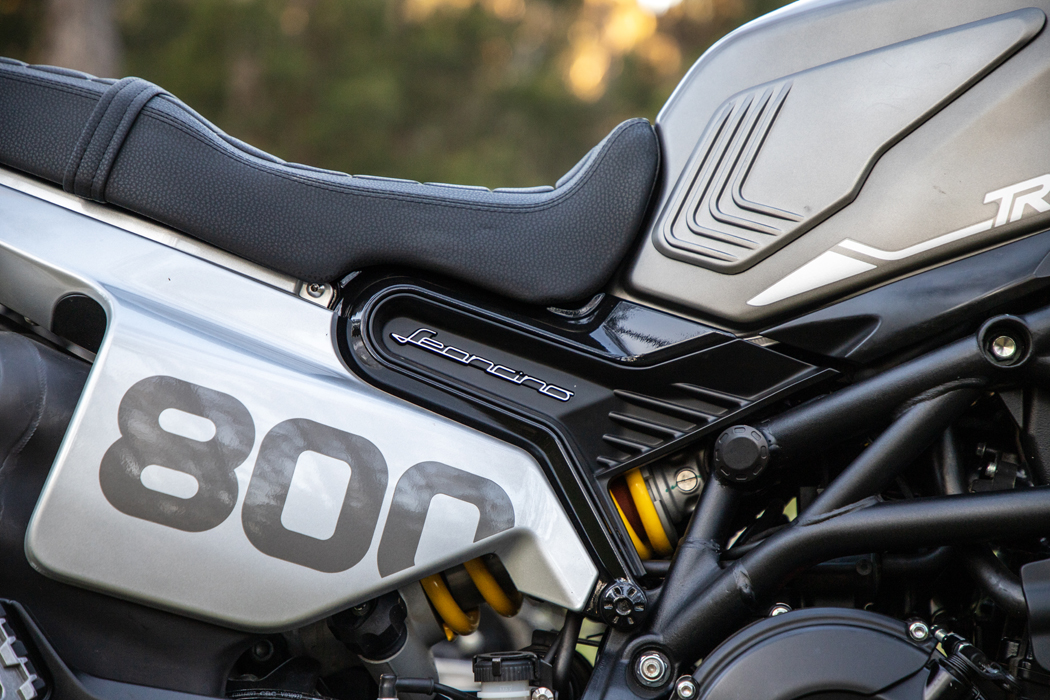
Braking it down
On paper, the Benelli’s twin-disc front-end and beefy monoblock radial calipers look to have it all over the CFMoto’s single-disc brake set-up but, in reality, there’s very little to split them in terms of dropping anchor. The Benelli’s – which is much heavier remember – front discs are 20mm larger than the CFMoto’s single 300mm disc, but the CFMoto uses J. Juan-branded calipers at both ends compared to the Benelli-branded units on the Leoncino, which levels it up.
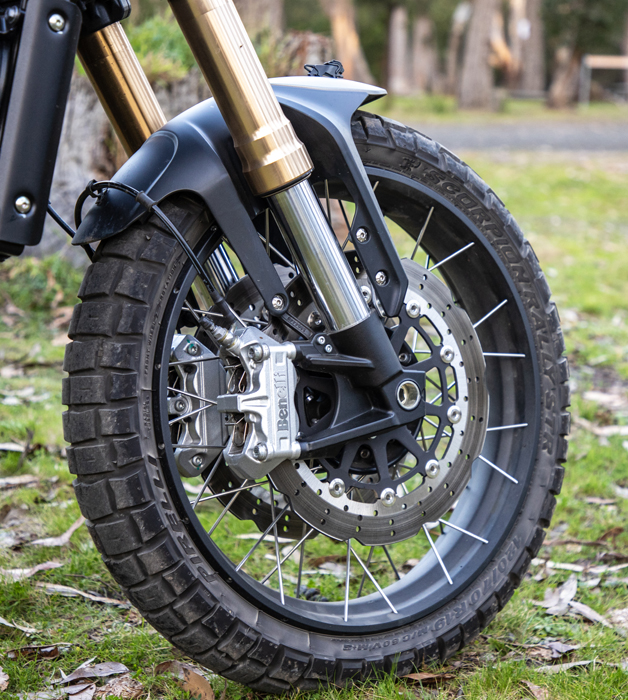
On both, the initial bite is on the softer side of things, which suits me just fine when riding off-road, and there’s nothing particularly noteworthy about the power or feel of either package – but in a good way. There’s a decent amount of power and feel from both rear brakes, too, and both pedals are located in such a way that they’re easy to operate when either standing or sitting. The CFMoto gets a few more points for having the ability to switch off the rear wheel’s ABS, though.
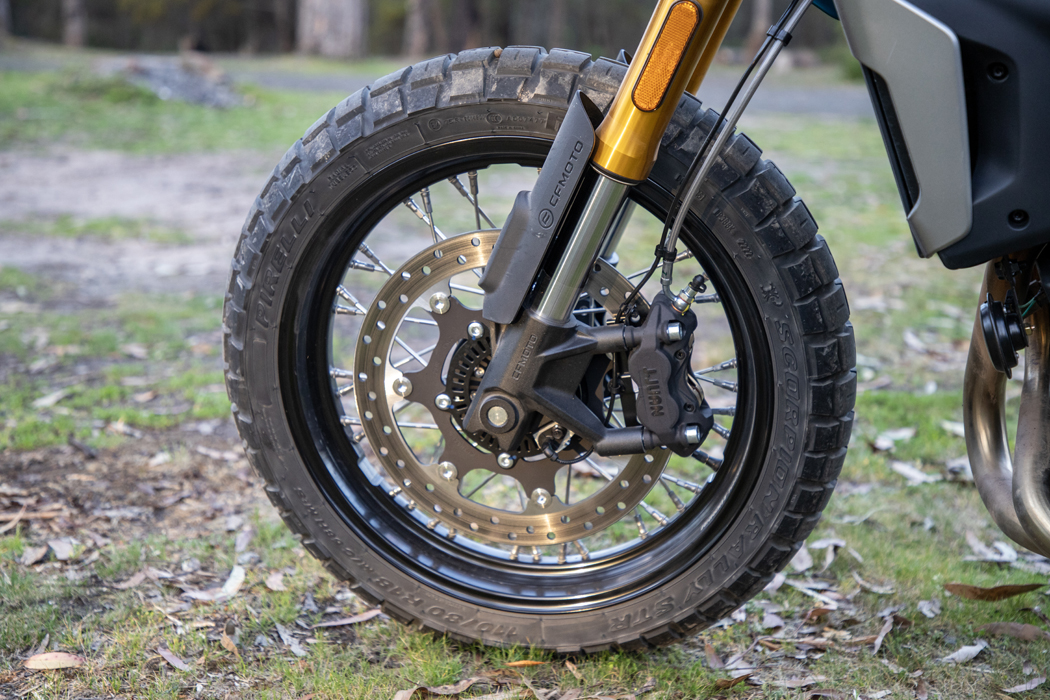
Dirty stuff
The amount of true off-road riding either of these two machines are realistically likely to see is probably negligible, but there’ll be some riders who will want to head deeper into the bush than maybe even CFMoto or Benelli envisioned.
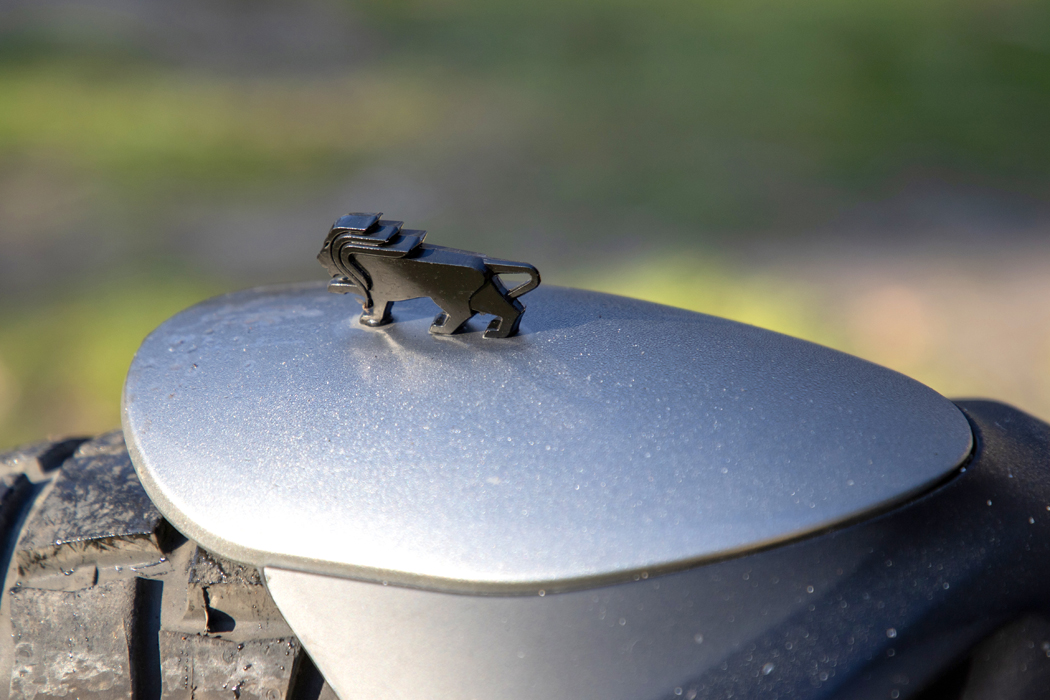
They both roll on tubeless wire-spoked rims shod with Pirelli Scorpion Rally STR rubber. While the Benelli gets a 19-inch front wheel compared to the CFMoto’s 18-incher, the CFMoto gets a high-mounted front guard compared to the conventionally mounted fender on the Benelli.
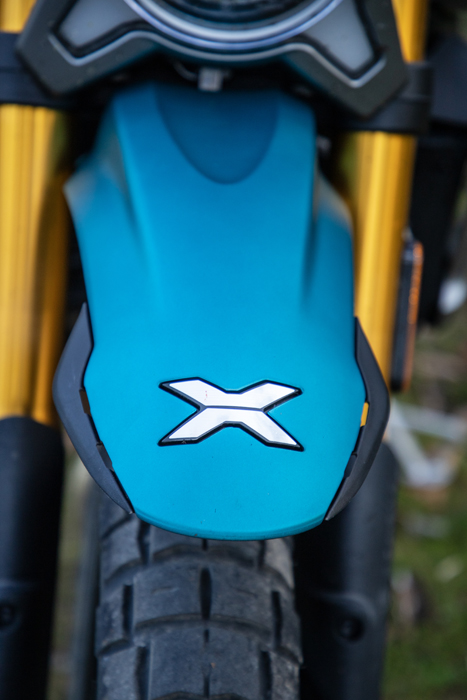
There’s 150mm of suspension travel at both ends of the CFMoto, while the Benelli gets 140mm, but there’s 220mm of ground clearance on the Benelli versus 180mm on the CFMoto.
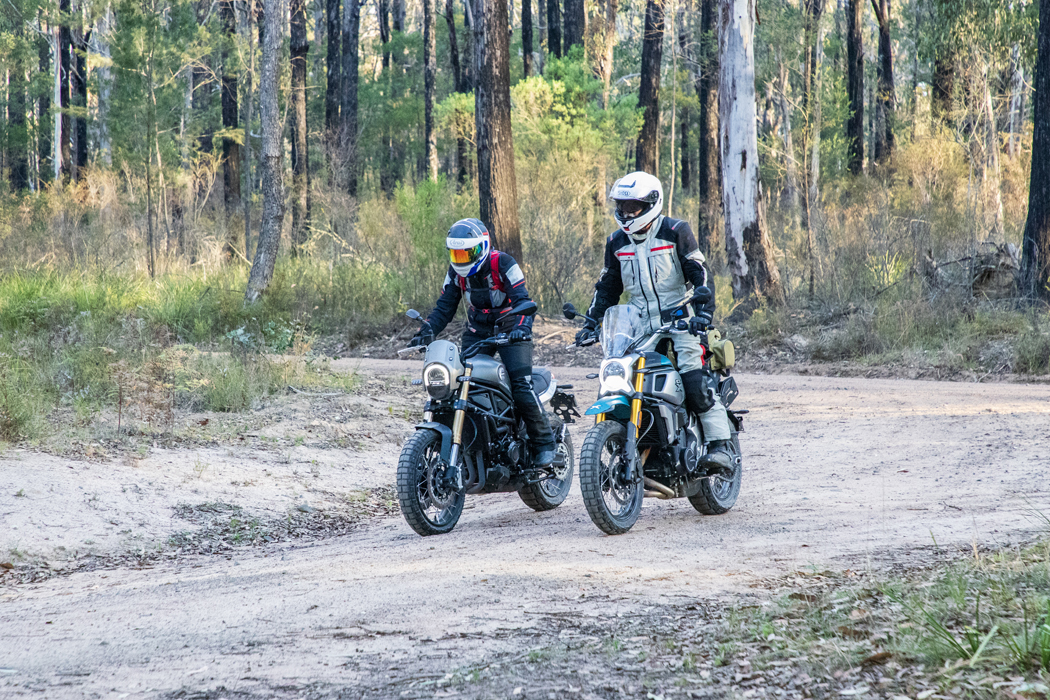
Comfort and ergos
Despite both bikes appearing to have a really similar profile and shape, the slight differences in their ‘triangles’ makes for pretty different ergonomics. There’s only 4mm difference in their seat heights – Benelli’s 834mm compared to the CFMoto’s 830mm – but there’s a longer reach to the Benelli’s flatter, narrower ’bar, while the rider’s ’pegs are mounted closer to the seat.

I found the CFMoto a lot more comfortable for my size and shape, helped too by its softer yet more supportive seat padding. But I suspect taller people would find the Benelli’s ergonomics to be a little more accommodating.

Off road, both Andy and I found the Benelli more comfortable to stand up on than the CFMoto, but once stopped, my shorter legs found an easier path to terra firma on the CFMoto due to the placement of the Benelli’s footpegs.
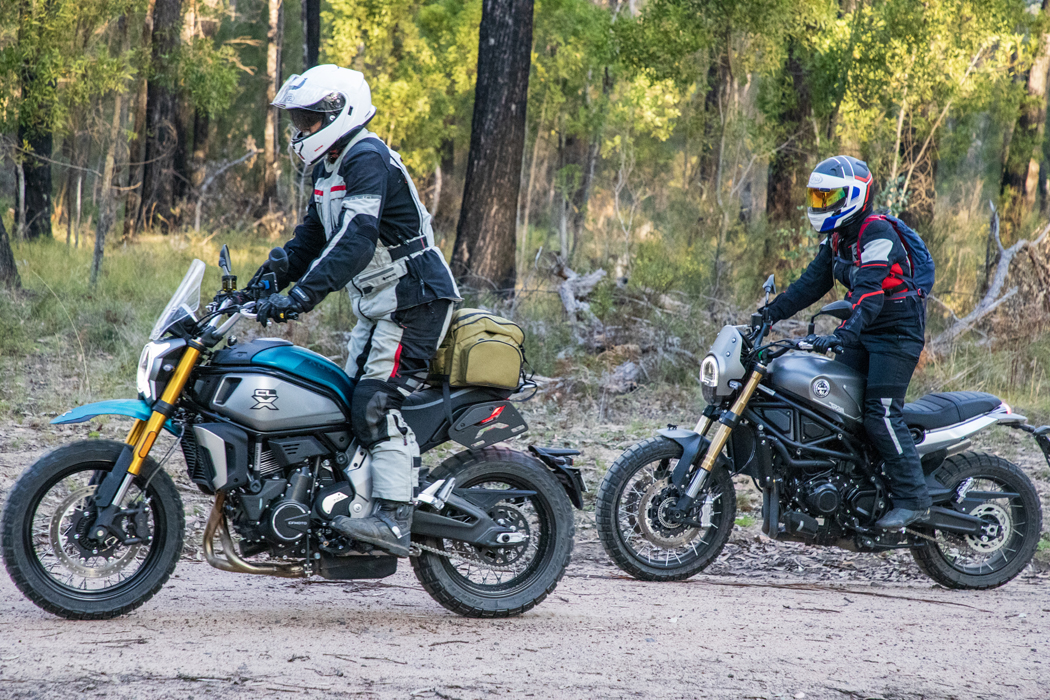
The CFMoto’s non-adjustable screen does an okay job of deflecting wind off your chest, though not your helmet, but I didn’t experience any buffeting as a result and was grateful for the reduced fatigue it resulted in at the tail-end of a few hundred clicks.

The switchgear looks a little dated on the Benelli compared to the CFMoto’s, which uses a very BMW-inspired design on its switchblocks, but the switches themselves have a much more positive action on the Benelli. Everything works perfectly, but there’s very little movement in the switches on the CFMoto, which means you’re often looking for a visual confirmation that the button you just pressed did what it was meant to.

Go, go gadget
Tech-wise, the CFMoto has it all over the Benelli. Admittedly, the CFMoto hit the market in the second half of 2023 compared to the Benelli’s mid-2022 release date and, given the speed at which Chinese manufacturers are developing, 18 months is a pretty long time.
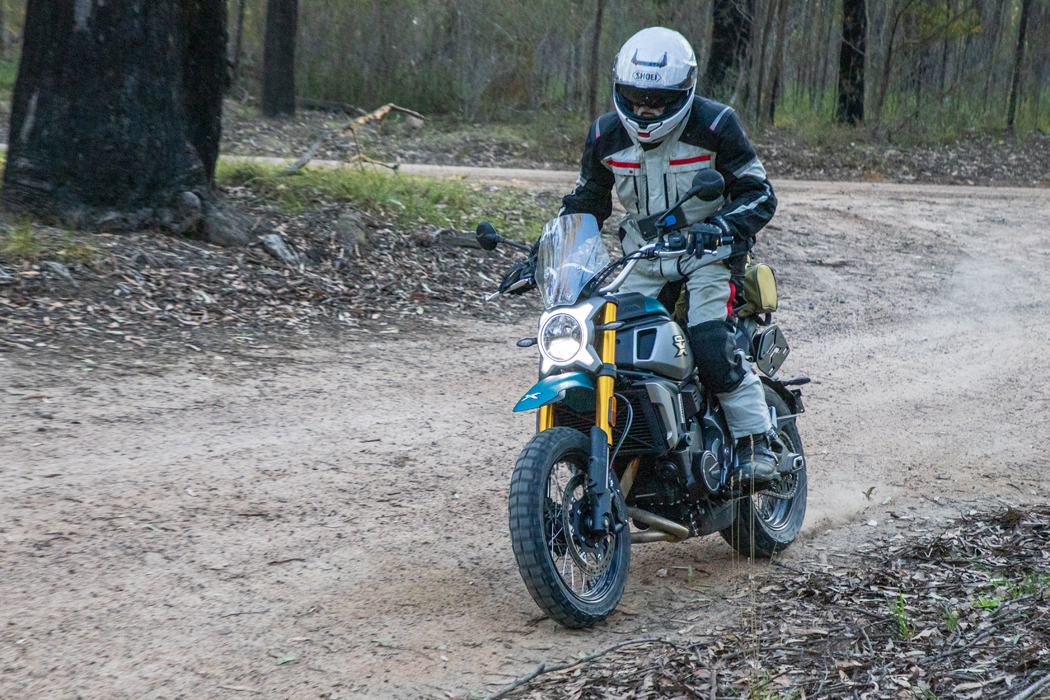
In terms of tech, the only thing the Benelli can boast over the CFMoto is its full-colour TFT dash that senses whether it’s day or night and switches its background to black or white accordingly. The CFMoto makes do with a simple circular LCD instrument panel.

The CFMoto gets a ride-by-wire throttle, and two switchable modes (Street and Off-road) as a result, while the Benelli makes do with a cable. And while on previous CFMotos (300SR) the switchable modes seemingly did nothing except change the layout of the dash, there’s a discernible difference in both throttle pickup and power delivery between the two modes.

Neither bike employs traction control, but both have ABS, of course, and the ABS can be deactivated on the rear wheel of the CFMoto, while you’re stuck with it full-time on the Benelli. The CFMoto has cruise control, too, where the Benelli doesn’t, and it’s a beautifully refined system that holds its speed even down long steep descents – impressive for a bike of this price. Both machines use LED lighting, but the CFMoto’s adapts to the ambient light, while self-cancelling indicators are also fitted as standard.
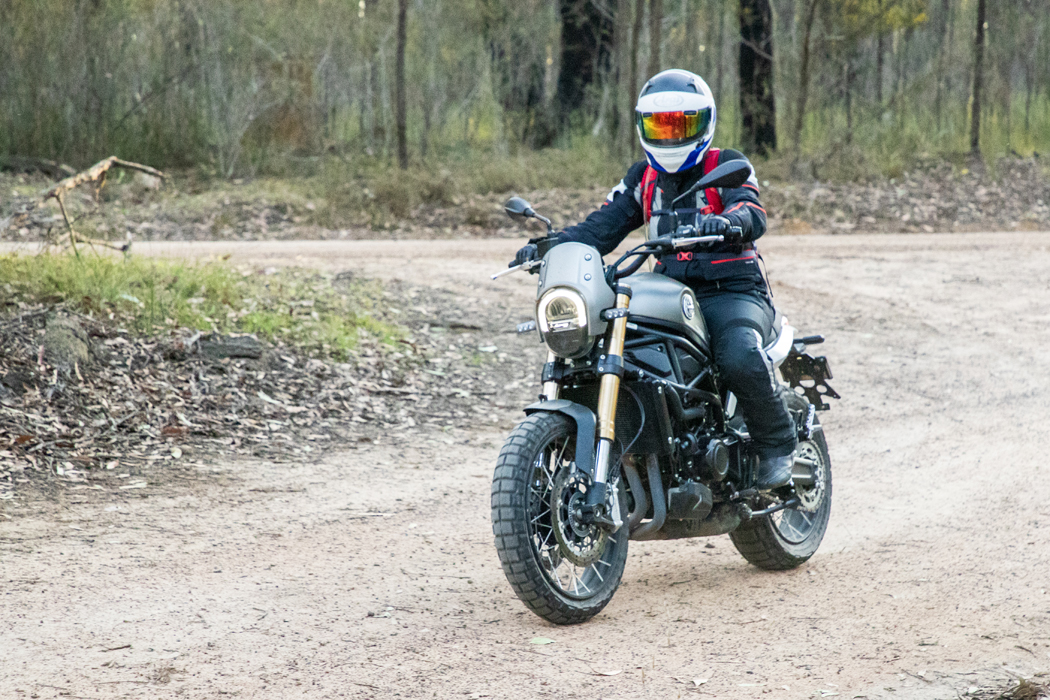
And just like the firm’s new 450SR, the 700 CL-X Adventure is equipped with CFMoto’s T-Box, which is a wired-in Bluetooth receiver that allows smartphone connectivity via the CFMoto Ride App. The CL-X doesn’t have a TFT display though, so you can’t see calls and messages or run navigation through the bike’s display like you can on the 450, but it uses GPS and 4G data to send you notifications on your bike’s whereabouts, speeds, lap times, fault codes and maintenance requirements – for free. And you can apply over-the-air updates to your bike if CFMoto decides to change the mapping to improve the fueling, for example. You can check to see if your bike is where you left it, and you’ll get a notification if it has moved outside your pre-determined geofence.
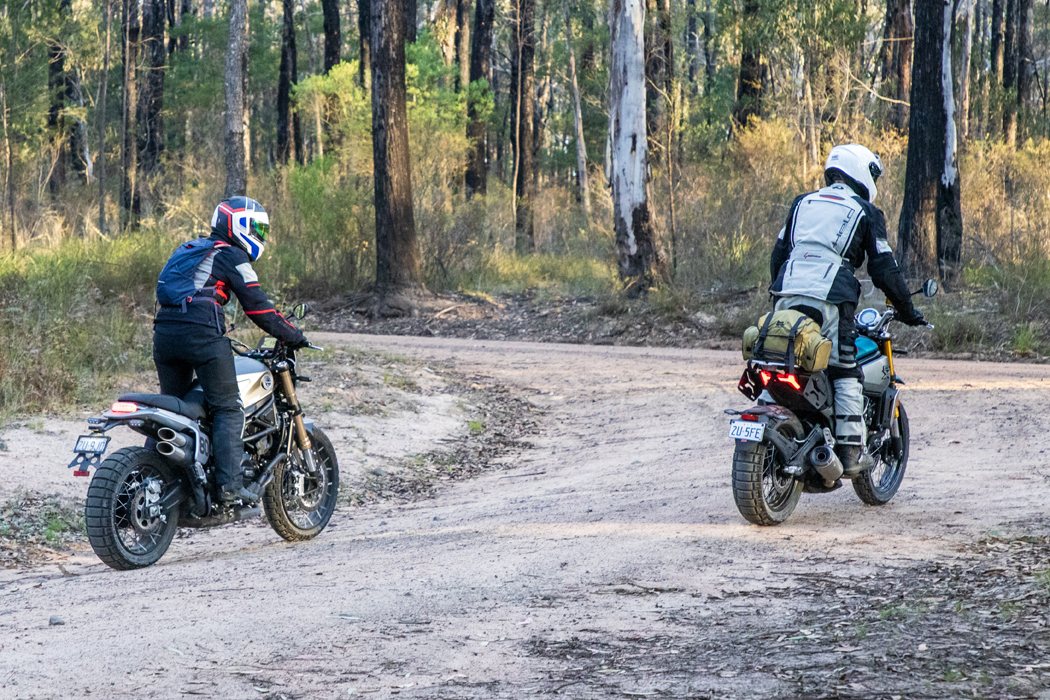
Banging bucks
When the Benelli hit Australian showrooms towards the end of last year, its $13,990 price tag represented great value for money. After all, it was $2500 less than the 803cc Ducati Scrambler Icon’s asking price and it made more power. But the arrival of the CFMoto has moved the goalposts.
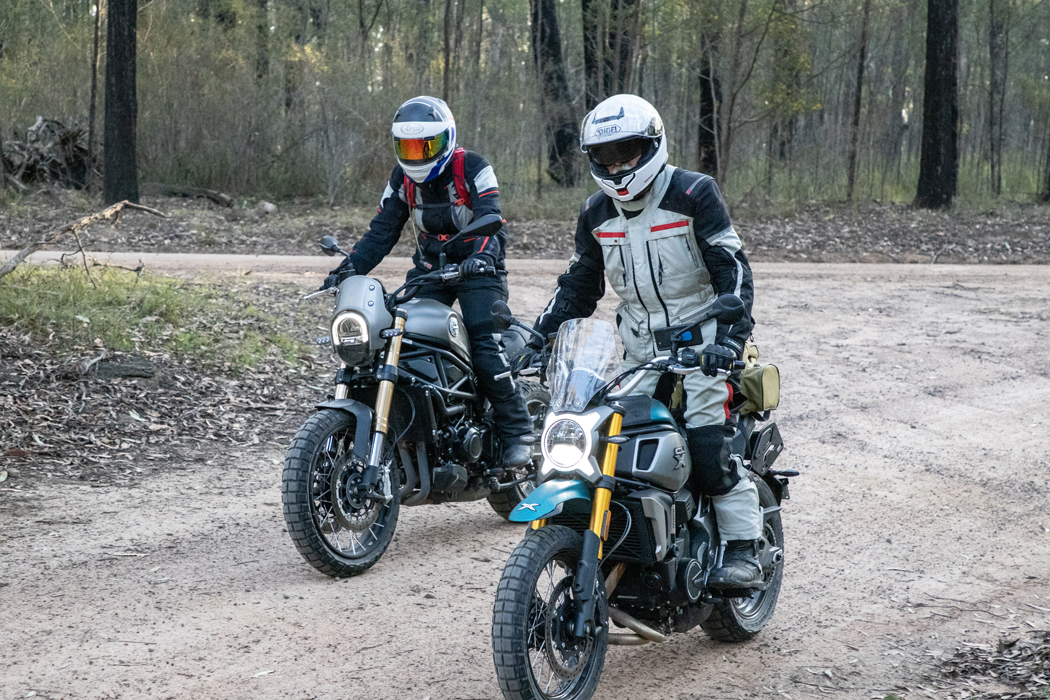
Sure, it’s doesn’t have as many cubes as the Benelli, but its suspension and braking hardware are superior and it leaves it for dead in the technology stakes. So while the Benelli still represents great value for money, the CFMoto – which is a full $2000 cheaper again at $11,990 (ride away) – represents excellent value for money. If you’re tossing up between the two, it’s almost impossible not to chose the CFMoto.
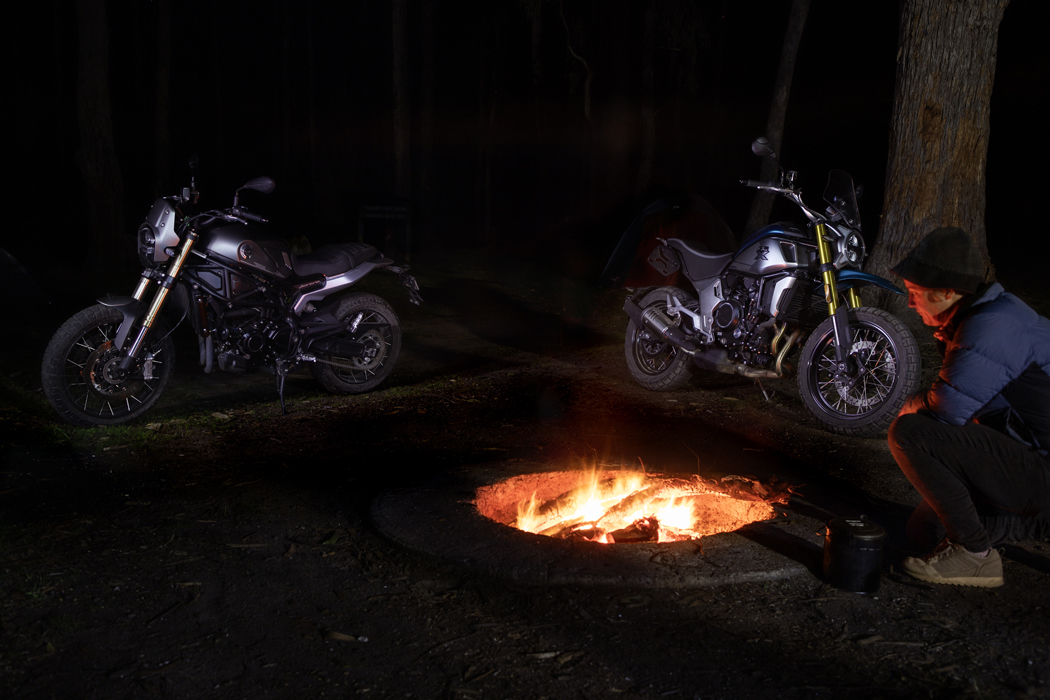
Test Kel Buckley + Photography Janette Wilson
